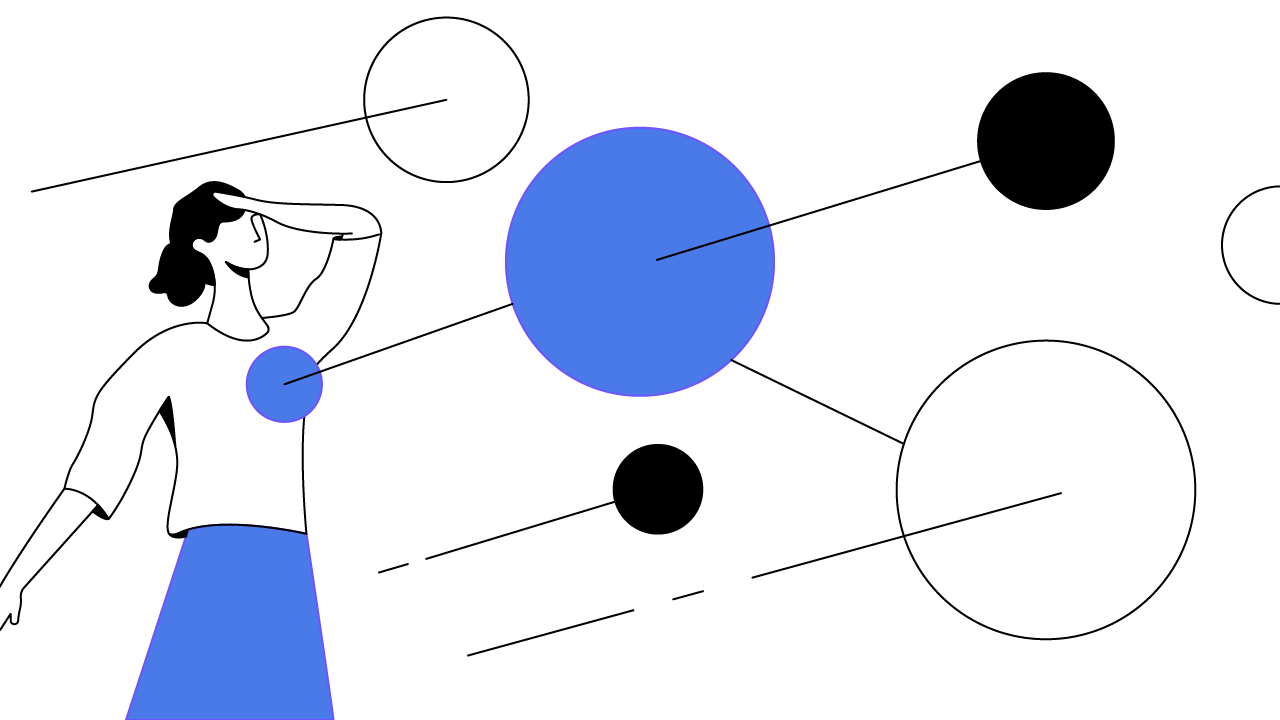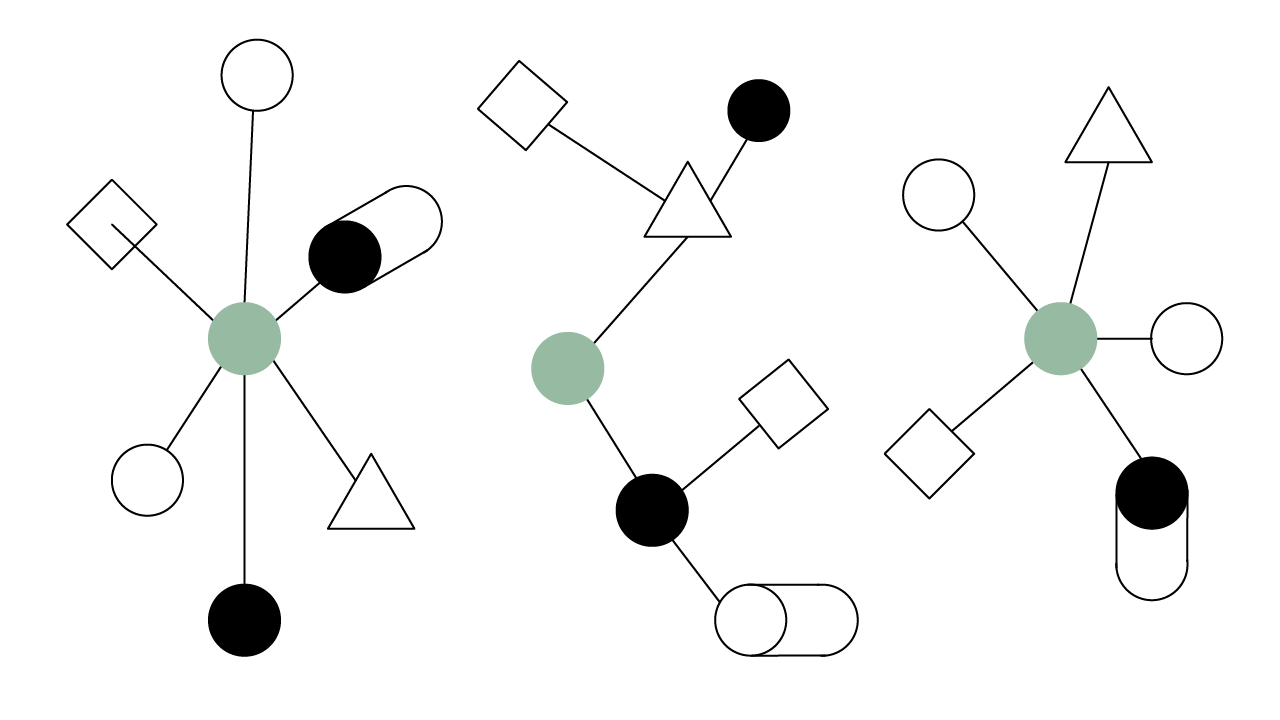Contents
What Is Chainlink in 5 Minutes
Chainlink is a decentralized network of nodes that provide data and information from off-blockchain sources to on-blockchain smart contracts via oracles.
Updated October 3, 2023 • 4 min read

Summary
Chainlink is a decentralized oracle network that provides real-world data to smart contracts on the blockchain. Smart contracts are pre-specified agreements on the blockchain that evaluate information and automatically execute when certain conditions are met. LINK tokens are the digital asset token used to pay for services on the network.
Understanding Chainlink Smart Contracts
To understand the benefits of Chainlink and how it functions, you need to understand some fundamental, interconnected concepts. Let’s start with smart contracts.

Smart contracts are pre-specified agreements on the blockchain that evaluate information and automatically execute when certain conditions are met. Crowdfunding is a good example: if a certain amount of ether (ETH) is deposited into a smart contract by a certain date, then payment will be released to the fundraiser — if it is not, then payment will be returned to donors. Because smart contracts exist on a blockchain, they are immutable (can’t be changed) and verifiable (everyone can see them), guaranteeing a high level of trust among parties that they accurately reflect the stated parameters of the agreement and will execute if, and only if, those parameters are met.

For smart contracts to craft agreements beyond those that pertain to data found on the blockchain, they require off-chain data in an on-chain format. The difficulty in connecting outside information sources to blockchain smart contracts in a language that they both understand is one of the main limitations in how widely smart contracts can be used.

Chainlink Oracles Bridge the On- and Off-Chain Chasm
This is where oracles come into play. An oracle is software known as ‘middleware’ that acts as an intermediary, translating data from the real world to smart contracts on the blockchain and back again.
However, a single centralized oracle creates the very problem a decentralized, blockchain-secured smart contract aims to solve — a central point of weakness. If the oracle is faulty or compromised, how would you know if your data is accurate? What good is a secure, trustworthy smart contract on the blockchain if the data that feeds it is in question?
So, let’s do a quick recap on smart contracts and oracles:
Smart contracts are immutable and verifiable contracts that automatically execute in an IF/THEN framework when conditions are met.
The data that defines these conditions has traditionally come from the blockchain.
Recently, oracles have been introduced into the crypto ecosystem to bring off-chain data to on-chain smart contracts.
But, centralized oracles diminish the benefits of on-blockchain smart contracts because they may be untrustworthy or faulty.

Chainlink is a decentralized network of nodes that provide data and information from off-blockchain sources to on-blockchain smart contracts via oracles.
This process, along with extra secure hardware, eliminates the reliability issues that might occur if using only a single centralized source.

Types of Chainlink Smart Contracts
The process starts on a smart-contract-enabled blockchain when a smart contract requires data. That smart contract puts out a request (Requesting Contract) for information.

The Chainlink protocol registers this request as an ‘event’ and in turn creates a corresponding smart contract (Chainlink Service Level Agreement (SLA) Contract), also on the blockchain, to get this off-chain data. The Chainlink SLA Contract generates three sub-contracts: a Chainlink Reputation Contract, a Chainlink Order-Matching Contract, and a Chainlink Aggregating Contract.

The Chainlink Reputation Contract, checks an oracle provider’s track record to verify its authenticity and performance history — then evaluates and discards disreputable or unreliable nodes.
The Chainlink Order-Matching Contract delivers the Requesting Contract’s request to Chainlink nodes and takes their bids on the request (when the Requesting Contract does not choose a specific set of nodes) — and then selects the right number and type of nodes to fulfill the request.
The Chainlink Aggregating Contract takes all the data from the chosen oracles and validates and/or reconciles it for an accurate result.

How Chainlink Nodes Reliably Validate Data
Chainlink nodes then take the Requesting Contract’s request for data and use “Chainlink Core” software to translate that request from on-blockchain programming language to an off-blockchain programming language a real-world data source can understand. This newly translated version of the request is then routed to an external application programming interface (API) that collects data from that source. Once the data has been collected, it’s translated back into on-blockchain language through Chainlink Core and sent back to the Chainlink Aggregating Contract.
Here’s where things get really interesting. The Chainlink Aggregating Contract can validate data from a single source and from multiple sources — and it can reconcile data from multiple sources.

So, if five nodes deliver one answer from a weather sensor and two other nodes deliver a different answer, the Chainlink Aggregating Contract will know that those two nodes are faulty (or dishonest) and discard their answers. In this manner, Chainlink nodes can validate data from a single source.

The Chainlink Aggregating Contract can repeat this validation process for multiple sources, then reconcile all validated data by averaging it into a single piece of data. Under certain circumstances, not all answers can be averaged but for simplicity’s sake we won’t go further into depth here.

The data source aside, Chainlink has created a way to reliably, and efficiently, provide accurate data to smart contracts on smart-contract enabled blockchains.
Where Do LINK Tokens Fit In?
Requesting Contract holders use LINK to pay Chainlink node operators for their work. Prices are set by the Chainlink node operator based on demand for the data they can provide and the current market for that data.
Chainlink node operators also use LINK to stake in the network; node operators must deposit LINK with Chainlink to demonstrate their commitment to the network and incentivize good service.
The Chainlink Reputation Contract considers the size of a node’s stake (among other criteria) when matching nodes with requests for data. Nodes with a greater stake are therefore more likely to be chosen to fulfill requests (and thus earn LINK tokens for their services). Moreover, the Chainlink network punishes faulty or dishonest nodes by taxing their stake of LINK for poor service.
LINK is built on Ethereum in accordance with the ERC-20 standard for tokens. It can be bought and sold for fiat currency or other digital currencies.
Cryptopedia does not guarantee the reliability of the Site content and shall not be held liable for any errors, omissions, or inaccuracies. The opinions and views expressed in any Cryptopedia article are solely those of the author(s) and do not reflect the opinions of Gemini or its management. The information provided on the Site is for informational purposes only, and it does not constitute an endorsement of any of the products and services discussed or investment, financial, or trading advice. A qualified professional should be consulted prior to making financial decisions. Please visit our Cryptopedia Site Policy to learn more.

Is this article helpful?


